R832 – L’Église de Montigny-sur-Loing, 1904-1905 (FWN327)
Pavel Machotka
(Cliquer sur l’image pour l’agrandir)
We should distinguish, when we can, the naturally imposing quality of a site from its monumental treatment. The difference becomes clear, I think, with the painting L’Eglise de Montigny-sur-Loing; its site is grand and impressive, it is clearly the motif for the painting, yet it appears natural and comfortably set upon its little hill – somewhat less monumental than in the painting. The difference was explained later, in part, by the contemporary postcard[1]: the commanding tree was absent when I first saw the site in 1977.
But the principal difference resides in Cézanne’s gentle alterations of the site’s geometry, and this is not at first apparent when standing in front of the scene. Eventually (or sooner, when studying a photograph) one will notice that Cézanne has brought the roofs of the church closer to the horizontal, reducing its apparent height, and if one then notices that he has also painted all the houses perfectly level – as if the town were a series of walls stacked one upon the other rather than solid buildings separated by streets and perhaps gardens – then all of the town rises vertically, all of it seemingly at the same distance from the viewer. It is closer to a hanging scroll from the Northern Sung dynasty representing tall mountains with parallel sides (whose top and bottom are both always at the viewer’s eye-level)[2] than a view of a hilltop town which, inevitably, will be either below or above the observer (or both, if tall enough). It would be farfetched to suggest that a hanging scroll was Cézanne’s model – on the contrary, his discovery of this geometry seems intuitive — but perfectly appropriate to say that the technique of ensuring the monumentality of a vertical composition has a noble precedent.
The postcard confirms that the tree grew, as I had suspected, from a narrow island in front of the bank on which Cézanne stood. Having cut off its base, Cézanne located it in the same plane as the buildings and made it conform to his monumental conception; but this had the peculiar effect of expanding the tree beyond all imaginable size.
The postcard also raises a minor question, but the question rankles nevertheless: How does one explain the painter’s and the photographer’s identical point of view? Did the one know the image made by the other – and if so, who followed whom? – or was there a view of the town that everyone considered ideal? As much as one might wish to have an answer, it seems beyond our reach, and yes, it would trivialize the import of the painting: it a majestic equivalent of what it represents.
Source: Pavel Machotka: Cézanne: Landscape into Art
Noter que le site a également été traité par l’aquarelle (RW489 ), Cezanne séant déplacé vers la droite par rapport à l’église :
De nombreux peintres ont posé leur chevalet à Montigny-sur-Loing (Sisley notamment). L’exemple suivant daté de 1892 permet de découvrir le site un peu avant que Cezanne vienne y peindre :
Voir aussi l’article : Des paysages du Nord aux premiers pas du cubisme
[1] Discovered by Alain Mothe; see his Ce Que voyait Cézanne, 2011.
[2] See, for example, Wen C. Fong, Beyond Representation, p. 92.

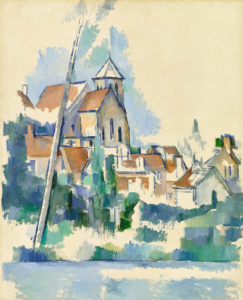
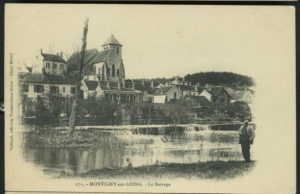
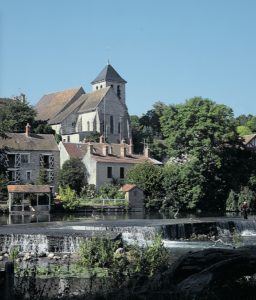
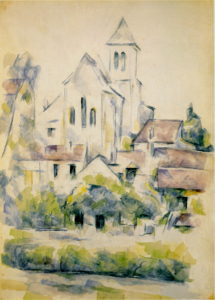
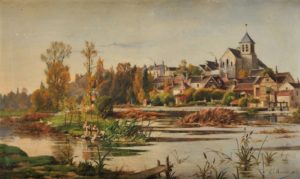

Vous devez être connecté pour poster un commentaire.